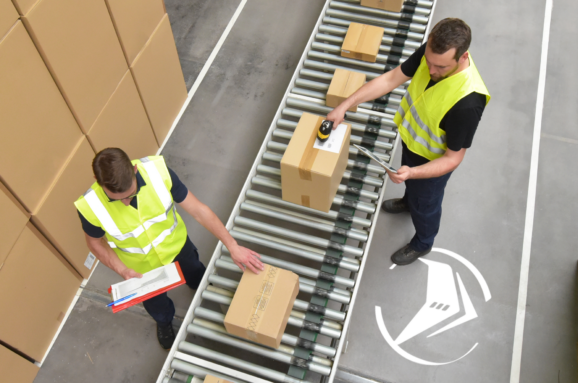Balancing Efficiency and Sustainability: The Key to Warehouse Operations Success
In today’s rapidly evolving world of trucking, warehousing, logistics, and supply chain management, the emphasis on sustainability and efficiency has never been more critical. The challenge lies in finding the delicate balance between these two seemingly opposing forces. This blog post will explore why companies must integrate efficiency and sustainability into their warehouse operations. We’ll delve into the significance of breaking down departmental silos and fostering coordination and collaboration across the board.
The Silo Syndrome
In many warehouse operations, different departments often operate in silos. This compartmentalization can hinder the overall efficiency and sustainability efforts of the organization. Each department plays a crucial role, but their independence can lead to redundancy, wastage, and missed opportunities for improvement.
- Receiving Department: The receiving department is the gateway to your warehouse. Their role involves inspecting, documenting, and sorting incoming goods. If this department operates independently, it can lead to discrepancies in inventory records, delays in goods movement, and increased carbon footprint due to inefficient handling.
- Storage and Inventory Management: Efficient storage is the backbone of a well-run warehouse. Warehouses need to maximize space utilization while ensuring easy access to products. If this department works in isolation, it may lead to overstocking or understocking issues, resulting in increased transportation costs and environmental impact.
- Order Picking and Packing: These departments are responsible for preparing customer orders. Operating without coordination can result in excessive travel distances for order pickers and inefficient packing practices that generate unnecessary waste.
- Shipping and Distribution: The final stage involves getting products to customers promptly. Lack of coordination in shipping can lead to missed delivery windows, increased fuel consumption, and a negative impact on your company’s sustainability goals.
Balancing Efficiency and Sustainability
Achieving efficiency and sustainability in warehouse operations requires a holistic approach that encourages collaboration among departments:
- Integrated Technology: Invest in an integrated Warehouse Management System (WMS) that connects all departments. A unified system ensures real-time visibility into inventory, order status, and shipping schedules, reducing errors and eliminating silos.
- Sustainable Packaging: Collaborate with your packing department to develop eco-friendly packaging solutions that reduce waste and the environmental footprint of your shipments.
- Cross-Training: Encourage cross-training of employees across departments. This improves flexibility and fosters a better understanding of how each department impacts the entire supply chain.
- Sustainability Metrics: Implement key performance indicators (KPIs) that measure sustainability efforts, such as reduced energy consumption, waste reduction, and emissions. Make these metrics visible to all departments to promote accountability.
- Supplier Collaboration: Extend collaboration beyond your warehouse. Work closely with suppliers to reduce packaging materials, transportation emissions, and promote sustainable sourcing.
- Continuous Improvement: Foster a culture of continuous improvement where employees are encouraged to share ideas for sustainability and efficiency enhancements. Recognize and reward contributions to motivate further innovation.
Conclusion
The importance of balancing sustainability and efficiency in warehouse operations cannot be overstated. While each department within a warehouse has a distinct role to play, they must work together seamlessly to maximize both sustainability and efficiency. The key lies in breaking down silos and fostering a culture of collaboration and innovation. By adopting integrated technologies, sustainable practices, and a commitment to continuous improvement, companies can stay competitive in the ever-evolving world of logistics and supply chain management while making a positive impact on the environment. Remember, the future of warehouse operations is not a choice between sustainability or efficiency – it’s a commitment to achieving both.
